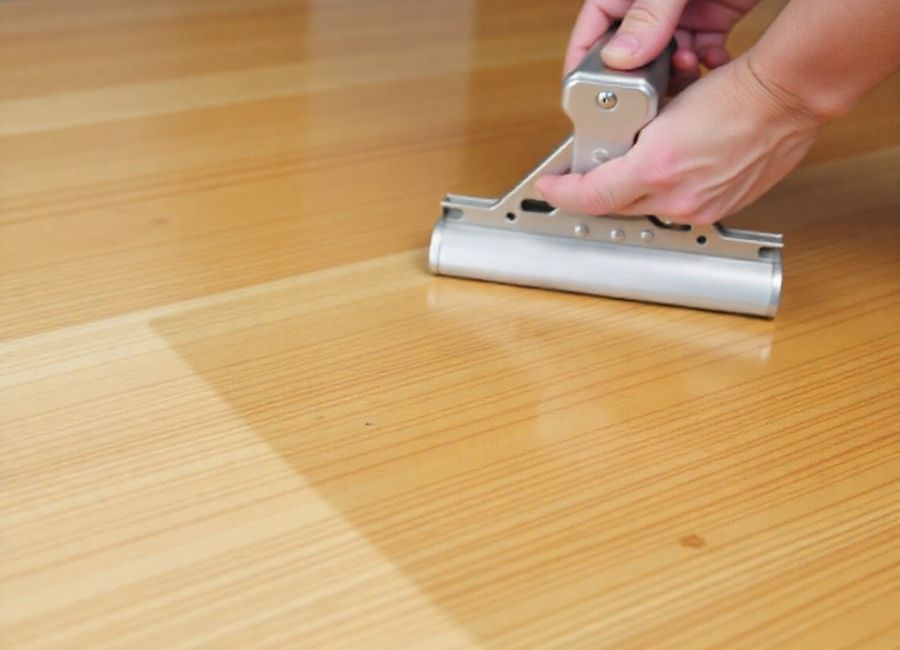Water-based polyurethane is a popular choice for wood finishing, offering a durable, quick-drying, and environmentally friendly option. Knowing its drying times is crucial for achieving optimal results, whether you’re working on a woodworking project, refinishing a floor, or applying a protective layer to furniture. This guide covers drying times, influencing factors, tips to expedite the process, and a comparison with oil-based polyurethane.
What You Need to Know About Water-Based Polyurethane Drying Time
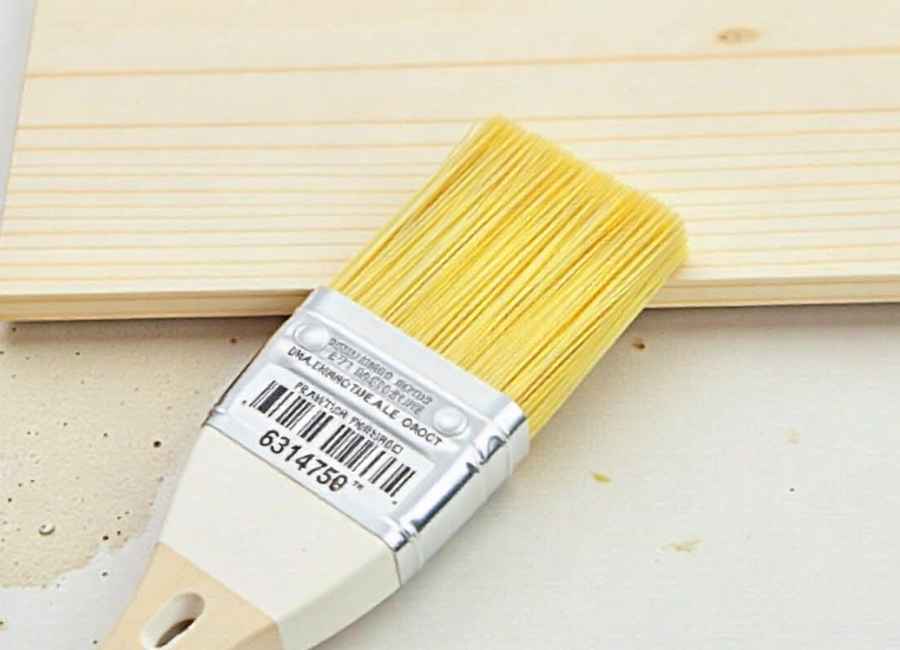
Water-based polyurethane is often chosen for its fast drying time and low odor, making it suitable for indoor use. It creates a clear, durable finish that enhances the wood’s beauty and protects against scratches, moisture, and stains.
However, like any finish, the drying time depends on several factors, including temperature, humidity, and the thickness of the application. Below, we’ll break down the drying stages and offer tips on how to optimize the process.
Factors That Affect Drying Time
Temperature and Humidity
Your workspace’s temperature and humidity significantly affect drying rates. Warmer temperatures speed up drying, while cooler ones slow it down. Low humidity helps polyurethane dry faster; high humidity can lengthen drying times and cause tackiness. For best results, maintain 70°F to 85°F (21°C to 29°C) with low humidity.
Thickness of Application
The thickness of your polyurethane coat greatly affects drying time. Thicker coats take longer to dry as more moisture must evaporate. For faster results, apply thinner coats to speed drying and avoid issues like bubbles or streaks.
Air Circulation
Proper airflow allows moisture to evaporate more quickly, speeding up drying. Use fans to enhance air movement, especially in spaces with limited ventilation.
General Drying Times for Water-Based Polyurethane
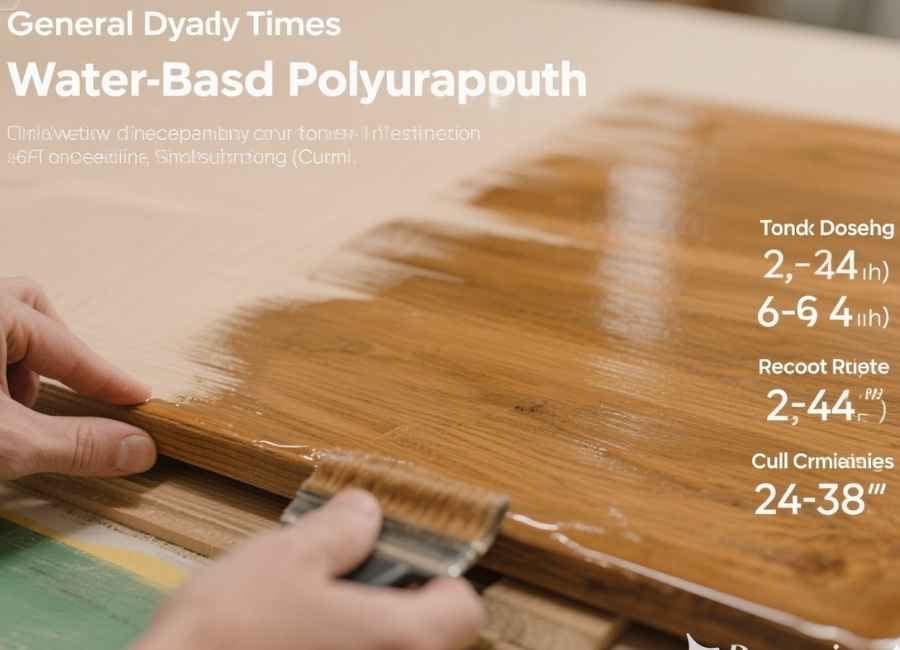
Understanding the different stages of drying for water-based polyurethane is essential for planning your project. Below is a breakdown of typical drying times:
- Touch Dry (2-4 Hours): After 2-4 hours, the polyurethane will feel dry to the touch. However, this doesn’t mean it’s safe to handle the item. Avoid applying pressure or placing anything on the surface at this stage to avoid smudging or disturbing the finish.
- Handle Dry (4 to 6 Hours): At this stage, the surface will be dry enough for light handling. You can gently touch or move the item, but avoid placing heavy objects on it or applying pressure to it.
- Recoat Time (2 to 4 Hours): If you plan to apply additional coats, you typically need to wait 2 to 4 hours between coats. This waiting period allows the previous layer to dry sufficiently while ensuring proper adhesion for the next layer.
- Full Curing Time (24 to 48 Hours): While the surface may be dry to the touch within a few hours, the finish won’t reach its full hardness until it has fully cured. ‘Curing’ is the process by which the finish reaches maximum hardness and durability through complete chemical reaction. This can take anywhere from 24 to 48 hours. Avoid heavy use or placing objects on the surface during this time to ensure the finish sets properly and achieves maximum durability.
Tips for Speeding Up Polyurethane Dry Time
While water-based polyurethane is already faster-drying than its oil-based counterpart, you can still take steps to accelerate the drying process without compromising the quality of the finish. Here are some valuable tips:
Optimize Temperature and Humidity
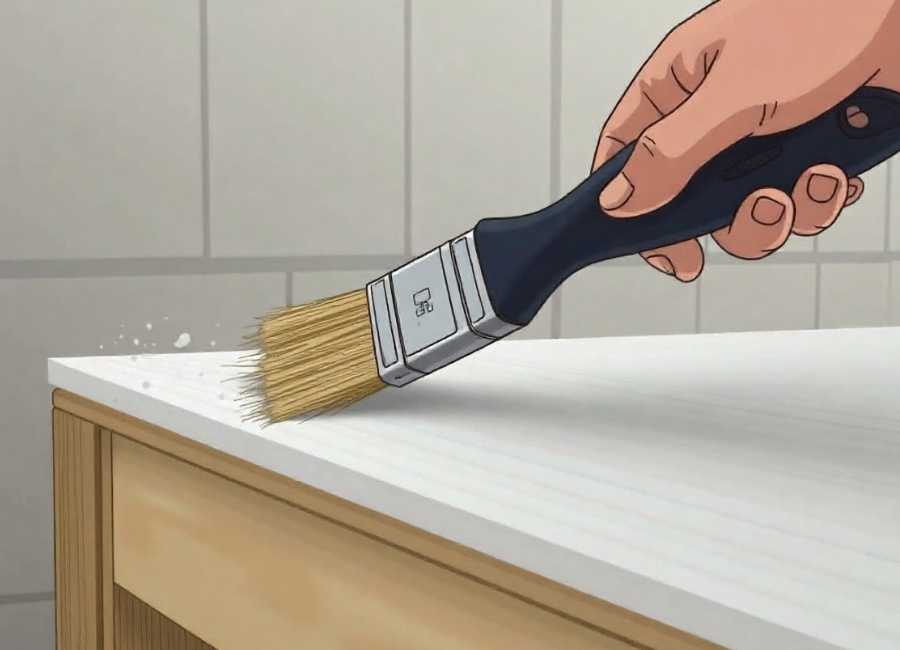
As mentioned, the ideal temperature for applying polyurethane is between 70°F and 85°F (21°C to 29°C), with low humidity. If your workspace is too humid, try using a dehumidifier to reduce moisture in the air.
Increase Airflow
Good airflow is one of the simplest and most effective ways to speed up the drying process. Use fans to circulate the air around your workspace, ensuring that air flows across the surface of the polyurethane. A well-ventilated space can significantly reduce drying time.
Apply Thin Coats
Thin coats not only provide a smoother, more even finish but also dry much faster, as moisture evaporates quickly.
Use Heat Sources Carefully
Applying heat to the polyurethane surface can help speed up the drying time, but be careful not to overheat it. Tools like a hairdryer, space heater, or heat lamp can be used to increase the temperature and help the moisture evaporate faster. Just be sure to avoid overheating, as excessive heat can damage the finish or cause the coating to dry unevenly.
Utilize a Thinner
If you’re looking to reduce drying time further, consider using a thinner such as Naphtha, which is a fast-evaporating solvent. A ‘thinner’ is a liquid added to a finish to reduce its viscosity, making it easier to apply in a smooth, even layer. This solvent evaporates faster than traditional spirits or turpentine, allowing the polyurethane to dry more quickly. Thinning the polyurethane can also help it flow more smoothly and reduce the likelihood of visible brushstrokes or uneven coverage.
Oil-Based vs. Water-Based Polyurethane: A Quick Comparison
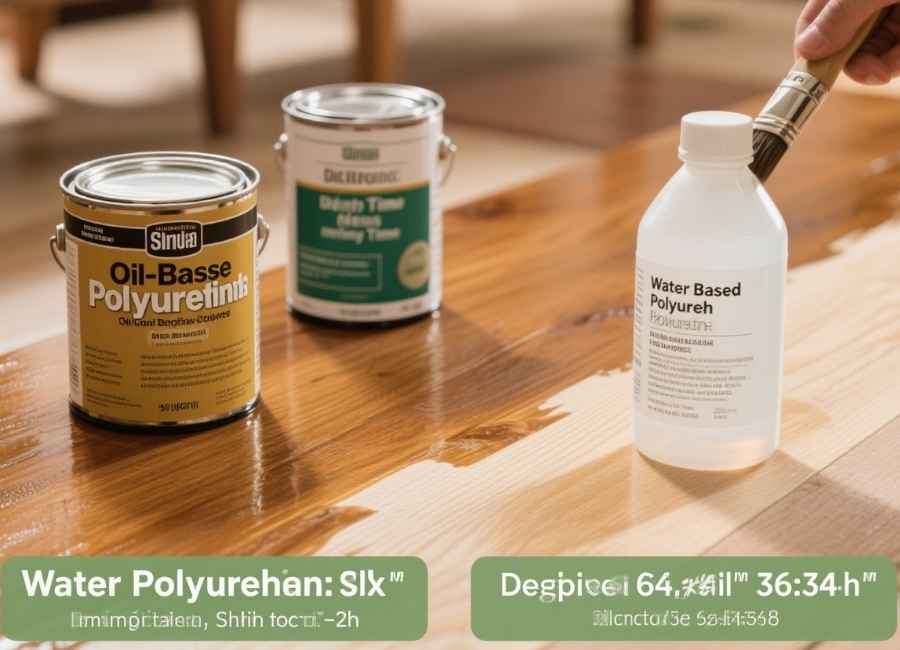
While both oil-based and water-based polyurethanes offer durable finishes, they differ significantly in terms of drying time, durability, appearance, and environmental impact. Here’s a comparison of the two:
- Drying Time
- Water-Based: Dries to the touch in 1-2 hours, with recoating possible in 2-4 hours.
- Oil-Based: Requires 4 to 6 hours to dry to the touch, and recoating usually takes 6 to 8 hours.
- Durability
- Water-Based: Modern formulations are durable but may not withstand heavy wear as well as oil-based finishes.
- Oil-Based: Generally more durable, with better resistance to scratches, dents, and wear.
- Environmental Impact
- Water-Based: Low in volatile organic compounds (VOCs), which are chemicals that easily become vapors or gases, making it an environmentally friendly option.
- Oil-Based: Contains higher VOCs, which contribute to air pollution and may require more ventilation during application.
- Appearance
- Water-Based: Clearer finish that doesn’t change the natural color of the wood.
- Oil-Based: Often leaves a warm, amber hue that enhances the wood’s color.
- Ease of Use
- Water-Based: Easier to clean up with soap and water and has a lower odor, making it suitable for indoor use.
- Oil-Based: Requires mineral spirits for cleanup and has a more pungent odor due to VOCs.
Polyurethane Sheen Types
Polyurethane finishes are available in various sheens, each offering a distinct level of gloss and texture. The sheen you choose can affect the overall appearance of your project:
- Gloss: High shine, ideal for high-traffic areas. It enhances the wood’s grain but may highlight imperfections.
- Satin: A softer, more subdued sheen that is ideal for furniture and trim.
- Matte: Non-reflective and flat, providing a more rustic look. It hides imperfections but is less durable.
- Semi-Gloss: A balanced finish between satin and gloss, offering moderate durability and a mild shine.
- Eggshell: A subtle, low-sheen finish that works well for traditional projects.
Conclusion
Water-based polyurethane offers several advantages for woodworking and flooring projects, including faster drying times, ease of application, and a lower environmental impact. Understanding the drying stages and factors that influence them is crucial for achieving the best possible finish. By optimizing temperature, humidity, and airflow, applying thin coats, and using the right tools, you can expedite the drying process and achieve a smooth, durable finish.
Whether you’re finishing a new floor, refinishing a piece of furniture, or tackling any woodworking project, water-based polyurethane is an excellent choice that combines quality with efficiency. If you have any further questions about water-based polyurethane or are ready to start your project, please contact us today for expert advice and high-quality products.







